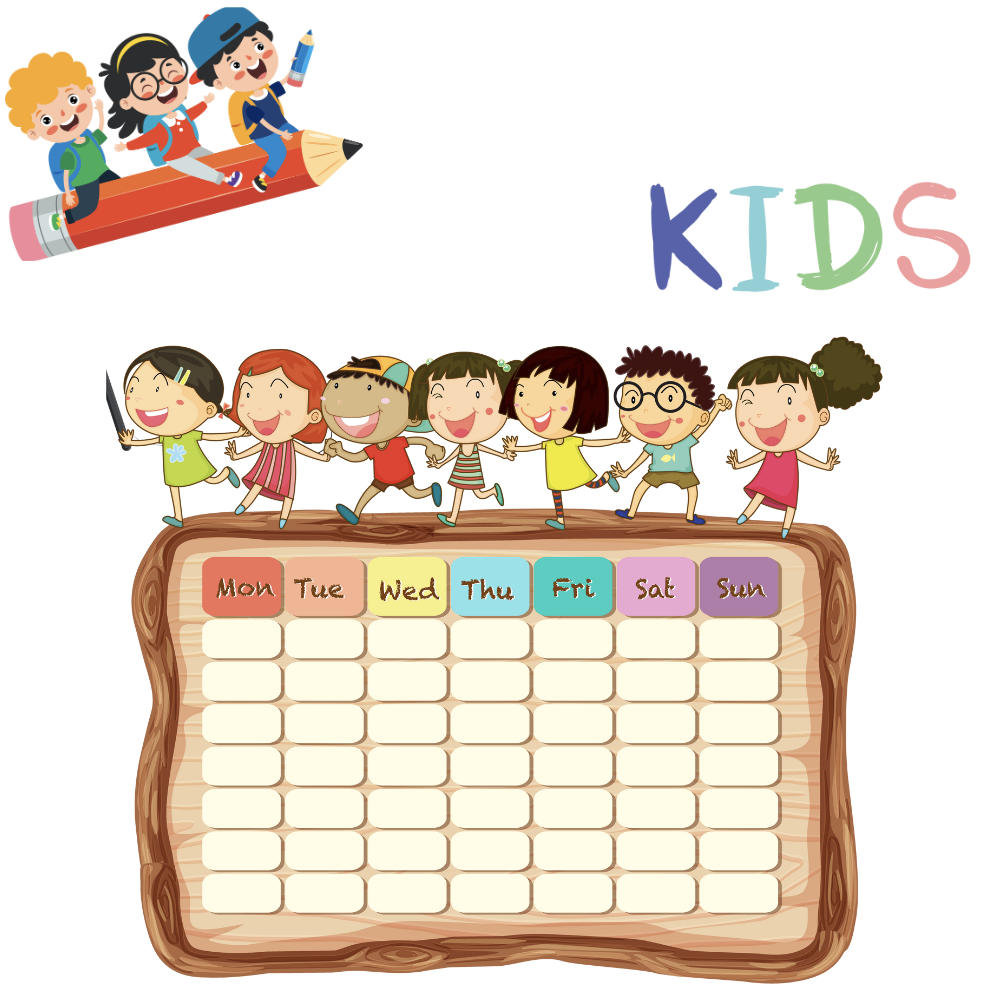
Hi, beautiful people! Most of us know the effectiveness of planning, right? For most adults who plan, we know how planning can help structure daily activities or achieve goals. So, if planning is effective, how can we encourage children to plan their day? Okay, you’re thinking, Here we go again. Can we let children be children? Why would you want a child to plan their day? I am the adult, and I make all the rules. Don’t worry, I am not about to replace your role as an adult, but allowing children to plan their day gives them the ability to learn ownership and responsibility.
Consistently creating a planning structure gives the child the opportunity to think about what they want to achieve; it also involves brainstorming as the child and adult discuss what needs to be done from both perspectives. When children are empowered to plan their day, it communicates that their voice is heard, which reassures them that you are listening. We all know that when we plan, we are more likely to complete a task or at least follow up to ensure it is done because we own the task and it is a goal we want to achieve. While the same is true for children, of course, some children, especially if you are just starting out to introduce the concept of planning, may need assistance and follow-up to ensure the task is done. But with time, if we encourage children to practice planning and, as adults have the patience to see the growth with time, they will eventually get it.
5 reasons why children should be taught and empowered to plan their day.
.It creates a sense of responsibility and ownership of the task.
.They know what to expect or do at a given time, with no surprises.
.They can manage their own time and activities (some children may need assistance).
.It begins to build a sense of self-discipline and self-motivation.
.It allows for discussions and creative thinking to ensure a task is done.
What I have observed with my 6-year-old son when given the opportunity to plan his day with my guidance It is easier for me to discuss with him when an activity has not been done based on what was written down and agreed upon. I have also observed that we have fewer discussions as to why it cannot be done because the ownership system was created by him. Hence, it becomes his responsibility without me saying too much. Of course, there are many times when I have to follow up and guide him, or the plan changes due to various circumstances.
However, from observation, this method has been helpful in creating a structure. With my son, I started with daily goal task wall papers and booklet templates I created and a note book, which involved him ticking daily tasks, sticking stickers when activities were completed, and writing the list of activities he wants to achieve that day. Presently, he uses a planner to track his weekly goals and daily tasks. He is still growing as I guide him on how to allocate time to do the task. Does this take time, and do we sometimes miss planning? Yes. However, we will keep picking it up until it is mastered because I have seen the benefit, and I will keep encouraging him as I guide him through the process.
In my next post, I will share a system we put in place when he was about 4 years old that helped him manage his morning, afternoon, and night routines. Please look out for that post. I hope these points will encourage you to support and guide your children on how to begin to plan their daily and weekend activities. I look forward to hearing from you if this structure works for your child or what structure best works for your child.
xoxo
Nike Pearse-Olorunfemi